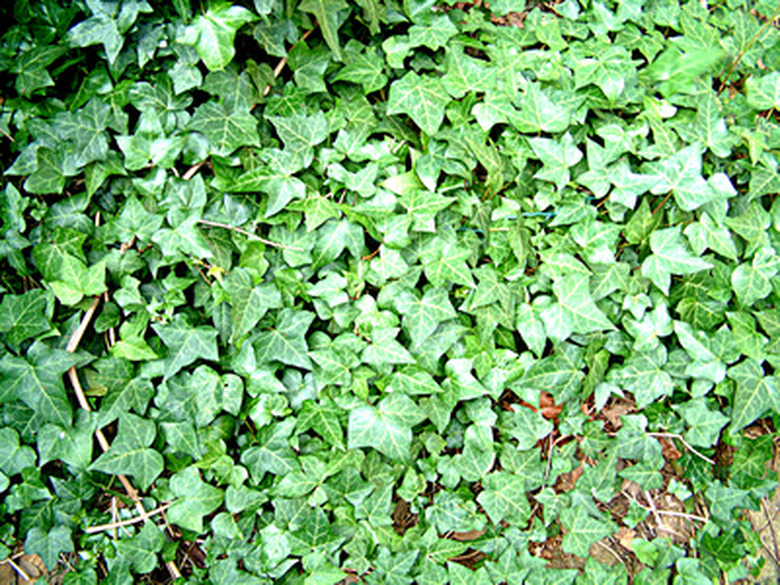Why Is My Ivy Plant Turning Brown?
Why is your ivy plant turning brown? Some ivy plants begin to wither for a variety of reasons, including fungi that appear as mildew. An ivy plant may not thrive during hot summer days because of its dense growth. Sometimes brown spots develop on the leaves followed by plant death in quick succession if the fungus isn't treated. Whether you grow your ivy outdoors or as an indoor plant, a number of factors can cause ivy plants to turn brown.
Tip
Several factors, such as fungal infection, bacterial leaf disease and insect infestation, may be responsible for your ivy plant's browning leaves.
Fungus on Ivy Leaves
Fungus on Ivy Leaves
If your ivy plant has brown leaves and brown stems, a fungus could be the issue. Thin the ivy to reduce density, pick off the brown leaves as symptoms appear and bag the diseased leaves to halt the spread of fungal spores to other plants.
Although fungicides aren't normally necessary, you can treat the plant when the first fungus symptoms appear. Always check the label for dosage rates and safety precautions before any application.
Bacterial Leaf Disease
Bacterial Leaf Disease
Bacterial leaf spot, or xanthomonas, appears as pale green, water-soaked spots marked by yellow or sometimes semitransparent borders. The spots later change to brown and black on the inside leaves of densely crowded ivy plants, which can cause the leaves to wilt and die. You can minimize the bacterial disease by improving air circulation through thinning out of the plants, avoiding overhead irrigation, and picking and destroying the infected leaves.
Ivy Physiological and Environmental Issues
Ivy Physiological and Environmental Issues
Many landscape ivy plants can be negatively affected by winter weather, and like fungal symptoms, the evidence may appear as tan to brown blotches occurring mainly but not limited to leaf margins. Entire plants are sometimes affected, and dead patches develop later in a planting bed.
Ivy plant injury is thus attributed to a mix of extremely cold temperatures, temperature variations and freeze-thaw cycles in addition to drying winds and even low temperatures. This type of injury can be minimized by utilizing needed fertilization and watering exercises during periods of drought.
However, too much water can also cause the leaves to turn brown. Overwatered ivy often causes dry leaves that are brown along the edges. When you overwater the ivy, the roots begin to drown and can't deliver moisture or nutrients to the leaves. Water ivy thoroughly, and wait until the top 1/2 inch or more of the soil is dry before watering again.
Black Vine Weevil Insects
Black Vine Weevil Insects
The larvae of the black vine weevil feasts on ivy roots, which first causes the plant's top growth to turn yellow and then brown and to subsequently die. To save your ivy plant, counterattack the weevils by treating the soil with insect-killing nematodes to control the damage. Apply the nematicide when there are adults feeding and before egg laying starts.
Even the spraying, which is recommended for the months of May, June and July at three-week intervals, may not be enough though. When you think that the pesticide has taken effect and the pesky weevils are dead, the insects can implausibly revive themselves from the poisoning within a few days and continue to damage the plant.
Seek Plant Experts
Seek Plant Experts
There are a variety of reasons why ivy plants' leaves turn brown. Assuming that you want your prized ivy to survive and it's still holding on, ask a plant expert to determine which of the variables apply to your plant's decline, and apply the appropriate method to treat the cause. If you must use chemical insecticides to assure the plant's survival, always remember to use the recommended dosage rates and observe safety precautions at all times.
